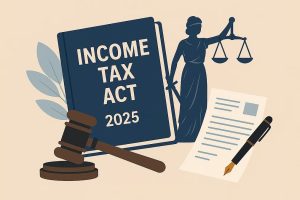When social media says you can earn 8.8% returns from the Post Office MIS + RD combo, it sounds like a golden ticket, doesn’t it? A safe, government-backed plan with such high returns seems irresistible. But is it truly possible, or is it another viral myth waiting to be busted?
Let’s unpack this claim with real data, understand how Post Office MIS and RD actually work, and calculate the real XIRR (Extended Internal Rate of Return). By the end, you’ll clearly see whether this “8.8% trick” holds water — or simply leaks through.
Table of Contents
ToggleTable of Contents
| Sr# | Headings |
| 1 | Introduction: The Viral 8.8% Claim Explained |
| 2 | Understanding the Basics: What Are MIS and RD? |
| 3 | How Post Office MIS Works |
| 4 | How Post Office RD Works |
| 5 | The Viral Claim: “Earn 8.8% Returns” |
| 6 | Why This Calculation Is Misleading |
| 7 | The Real Numbers: Let’s Crunch Them |
| 8 | Case 1: Zero Tax Liability |
| 9 | Case 2: 5% Tax Slab |
| 10 | Case 3: 20% Tax Slab |
| 11 | Case 4: 30% Tax Slab |
| 12 | Summary Table of Realistic Returns |
| 13 | Why You Can’t Get 8.8% Returns |
| 14 | Should You Still Consider MIS + RD? |
| 15 | Better Alternatives for Higher Returns |
| 16 | Final Thoughts: The Truth About “Smart” Investing |
| 17 | FAQs |

1. Introduction: The Viral 8.8% Claim Explained
Every few months, new “investment hacks” trend on social media. Lately, one such video claims that by investing in the Post Office Monthly Income Scheme (MIS) and reinvesting that income into a Recurring Deposit (RD), you can magically earn 8.8% returns.
Sounds too good to be true, right? That’s because it is. Let’s dig in and uncover what’s really happening behind this flashy number.
2. Understanding the Basics: What Are MIS and RD?
Before we dive into calculations, it’s important to understand how these two Post Office schemes work.
- Post Office MIS gives you a monthly income from a lump sum investment.
- Post Office RD helps you build savings gradually through monthly deposits.
Both are government-backed and considered safe, but neither is a magic money multiplier.
3. How Post Office MIS Works
Think of MIS like a tree that gives you fruit every month. You plant it once (your lump sum investment), and every month it yields steady income.
- Investment Tenure: 5 years
- Current Rate (Oct–Dec 2025):4% p.a.
- Example: Invest ₹9,00,000
- Monthly interest = ₹9,00,000 × 7.4% ÷ 12 = ₹5,550
- After 5 years, you get your full ₹9,00,000 back
It’s an income scheme, not a growth scheme. You decide what to do with that monthly ₹5,550.
4. How Post Office RD Works
The Post Office Recurring Deposit (RD) is the opposite of MIS — instead of investing a lump sum, you invest small amounts regularly.
- Investment Tenure: 5 years
- Interest Rate:7% per annum (compounded quarterly)
- Goal: To grow regular savings with stable interest
Now, the viral idea is to reinvest MIS interest (₹5,550/month) into this RD for 5 years.
5. The Viral Claim: “Earn 8.8% Returns”
Here’s what the viral posts suggest:
- Invest ₹9,00,000 in MIS (7.4%).
- Earn ₹5,550 every month.
- Reinvest that ₹5,550 in RD (6.7%).
- After 5 years:
- MIS returns principal ₹9 lakh
- RD matures to ₹3.9 lakh
- Total = ₹12.9 lakh → “8.8% returns!”
At first glance, it looks neat and convincing — but once you add taxes and real compounding, the illusion fades fast.
6. Why This Calculation Is Misleading
Let’s break down the key mistakes that make this viral claim false.
a. It Ignores Taxes
Both MIS and RD interests are fully taxable as “Income from Other Sources.”
If you’re in the 20% or 30% tax bracket, your effective return drops sharply.
b. It Assumes Monthly Compounding
Post Office RDs compound quarterly, not monthly.
That small difference makes a big impact over 5 years.
c. It Uses the Wrong Return Formula
You can’t just average returns. The correct method is XIRR, which considers the timing of every cash inflow and outflow.
7. The Real Numbers: Let’s Crunch Them
Now let’s see what really happens when you apply correct math and actual interest rates (for Oct–Dec 2025).
- MIS Interest Rate:4%
- RD Interest Rate:7% (quarterly)
- Investment: ₹9,00,000 for 5 years
- MIS Monthly Income: ₹5,550
We’ll analyze 4 tax scenarios: 0%, 5%, 20%, and 30%.
8. Case 1: Zero Tax Liability
If you don’t pay tax, your full ₹5,550/month goes into RD.
- RD Maturity (after 60 deposits @6.7%): ₹3.96 lakh
- MIS Principal: ₹9 lakh
- Total Maturity = ₹12.96 lakh
- XIRR = 7.4% per annum
✅ The combo earns roughly the same as MIS itself — no “extra” return.
9. Case 2: 5% Tax Slab
With 5% tax, your monthly reinvestment drops slightly.
- Monthly RD deposit = ₹5,272
- RD Maturity = ₹3.76 lakh
- Total = ₹12.76 lakh
- XIRR = 7.1% per annum
The small tax hit reduces returns slightly — but still safe.
10. Case 3: 20% Tax Slab
For middle-income earners:
- Monthly RD deposit = ₹4,440
- RD Maturity = ₹3.12 lakh
- Total = ₹12.12 lakh
- XIRR = 6.2% per annum
Here’s where the shine fades — taxes eat into your return significantly.
11. Case 4: 30% Tax Slab
For high earners, the picture gets worse.
- Monthly RD deposit = ₹3,885
- RD Maturity = ₹2.72 lakh
- Total = ₹11.72 lakh
- XIRR = 5.2% per annum
The so-called “8.8% return” has now crashed to just 5.2%.
12. Summary Table of Realistic Returns
| Tax Slab | Monthly RD Investment | RD Maturity (5 yrs) | Total Maturity (MIS + RD) | Realistic XIRR |
| 0% | ₹5,550 | ₹3.96 lakh | ₹12.96 lakh | 7.4% |
| 5% | ₹5,272 | ₹3.76 lakh | ₹12.76 lakh | 7.1% |
| 20% | ₹4,440 | ₹3.12 lakh | ₹12.12 lakh | 6.2% |
| 30% | ₹3,885 | ₹2.72 lakh | ₹11.72 lakh | 5.2% |
13. Why You Can’t Get 8.8% Returns
The viral number comes from ignoring tax, compounding frequency, and XIRR.
When you include all three, the maximum return equals the MIS rate itself — 7.4%.
So, the 8.8% claim is mathematically impossible under current Post Office rates.
14. Should You Still Consider MIS + RD?
Absolutely — but only if your goal is safety and income stability, not maximum returns.
✅ Ideal for:
- Retirees or senior citizens
- Low or zero-tax individuals
- Anyone who values a predictable, government-backed income
Not suitable for:
- High-tax individuals
- Those seeking inflation-beating growth
15. Better Alternatives for Higher Returns
If you want better post-tax outcomes, consider these options:
- PPF (Public Provident Fund):1% tax-free
- SCSS (Senior Citizens Savings Scheme):2% (taxable but safe)
- RBI Floating Rate Bonds: ~7.05%, linked to G-sec yields
These instruments either provide tax advantages or higher nominal rates.
16. Final Thoughts: The Truth About “Smart” Investing
Before falling for any viral investment hack, ask yourself:
- Is it tax-free?
- How does compounding actually work?
- Are the returns calculated via XIRR or simple averages?
The so-called “8.8% return” is a myth.
In reality, your effective return from the MIS + RD combo will range between 5.2% and 7.4%, depending on your tax bracket.
So yes, it’s a steady and safe option — but not a high-return one.
Always remember: in personal finance, slow and steady beats viral and flashy.
17. FAQs
1. Can the Post Office MIS + RD combo really give 8.8% returns?
No. The actual post-tax, XIRR-adjusted returns range between 5.2% and 7.4%, depending on your tax bracket.
2. Is interest from Post Office MIS taxable?
Yes, the interest from MIS is fully taxable under “Income from Other Sources.”
3. Can I automatically transfer MIS interest to RD every month?
No, this process must be done manually or through a standing instruction at your Post Office branch.
4. Is the Post Office RD interest compounded monthly or quarterly?
Quarterly. This is one of the reasons why the viral 8.8% return calculation is incorrect.
5. Which Post Office scheme offers the best post-tax returns?
If you want tax-free growth, the Public Provident Fund (PPF) is a better option than the MIS + RD combo.
The Post Office MIS + RD combo is like a well-built car that won’t break down — but it’s not a race car. It will take you safely to your destination, just not fast. Choose it for security, not speed.



